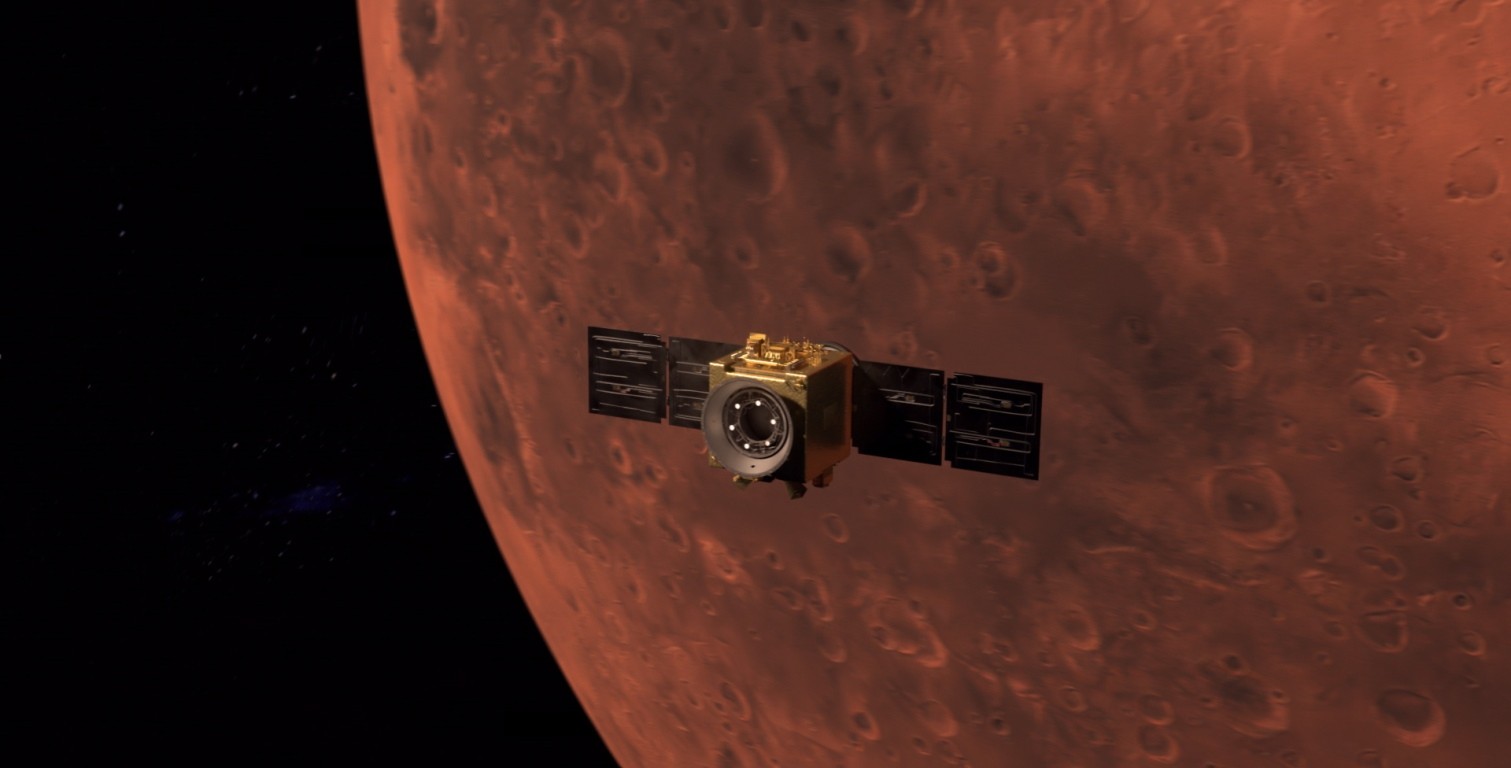
The published image made available by the Mohammed bin Rashid Space Center (MBRSC) shows an illustration of the Hope Probe reaching Mars orbit (issued on February 09, 2021). The UAE's Hope Probe to explore Mars is the first planetary mission led by an Arab Islamic country, and the space probe is dedicated to studying the atmosphere of Mars. EPA/Mohammed Bin Rashid Space Center/UAE Space Agency Bulletin for Editorial Use Only/No Sales
The important and unprecedented geological interaction between Earth and Mars is highlighted by a new study.
He claims that red planet, Even though it is about 140 million miles away from Earth, it can affect them Deep oceans Our planet by moving 'giant eddies'
Scientists have analyzed sediments extracted from hundreds of sites deep in Earth's oceans in order to read Earth's past, thus opening a window on time: to be precise. Looking back tens of millions of years into Earth's past.
- What they found surprised them.
The sediments revealed that deep-sea currents strengthened or weakened over 2.4 million-year cycles, according to the study published Tuesday in the journal Nature Communications.
Adriana Dutkiewicz, one of the study's authors and a sedimentologist at the University of Sydney, told CNN that scientists did not expect to discover these cycles and that There's only one way to explain it: “It is associated with the interactions of Mars and Earth»
According to the study, The two planets influence each otherThrough a phenomenon called “coordination”, Which takes effect when two rotating objects gravitationally push and pull each other,
It is sometimes described as a kind of harmony between distant planets. This interaction changes the shape of their orbits, affecting their ellipticity and thus their distance from the Sun.
For Earth, this interaction with Mars translates into periods of increased solar energy which means a warmer climate. The report found that these warmer cycles are associated with stronger ocean currents.
It should be noted that these 2.4 million year cycles do affect global warming and ocean currents on Earth, but they are natural climate cycles and are not related to the global warming caused by human activity that the world is witnessing today.
The authors describe these currents as “giant eddies” that can reach the deep ocean floor, eroding the seafloor and causing large accumulations of sediment.
However, scientists are sounding the alarm with increasing force about the “health” of this critical current system. There are fears it could show early signs it is on the verge of collapse, as rising global temperatures warm the oceans and melt ice.
The collapse would have catastrophic climate consequences, including a rapid drop in temperatures in some parts of the planet and rising temperatures in others.
Satellite observations have shown that these eddies have become more active in recent decades, but the currents resulting from them do not always reach the ocean floor.
However, it is still unclear exactly how different processes affecting deep ocean currents and marine life will play out in the future, the study authors said in a statement, but they hope their study will help create better models for future climate projections.
With information from CNN
The truth behind the white lines in the sky and why conspiracy theorists will never be proven wrong
Follow Hellas Journal on Google News
Hellas Journal – Newsletter

“Total alcohol fanatic. Coffee junkie. Amateur twitter evangelist. Wannabe zombie enthusiast.”





More Stories
Is this what the PS5 Pro will look like? (Image)
Finally, Windows 11 24H2 update significantly boosts AMD Ryzen – Windows 11 performance
Heart Surgeon Reveals The 4 Things He ‘Totally Avoids’ In His Life